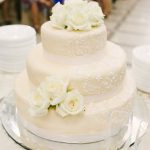Are you looking to learn how to decorate a birthday cake using fondant? Fondant has become an incredibly popular choice for cake decorating due to its versatility and ability to create stunning designs. Whether you’re a beginner or an experienced baker, fondant offers endless possibilities for creating beautifully decorated cakes that are sure to impress at any celebration.
Fondant is a smooth, pliable icing-like substance that can be rolled out and draped over cakes to create a flawless finish. It provides a clean canvas for intricate designs and allows for customization with colors, textures, and decorations. From simple birthday cakes to elaborate wedding cakes, fondant has become a go-to choice for many bakers looking to elevate their creations.
In this article, we will explore the step-by-step process of decorating a birthday cake using fondant. From preparing the cake base to rolling out the fondant smoothly and creating intricate decorations, we will provide tips and techniques to help you achieve professional-looking results in your own kitchen. With some practice and creativity, you can master the art of decorating with fondant and create show-stopping cakes for any occasion.
Equipment and Ingredients Needed
When it comes to decorating a birthday cake using fondant, having the right equipment and ingredients is essential for a successful outcome. Here are some key tools and materials you will need to create beautifully decorated cakes with fondant:
Fondant
The most important ingredient for decorating with fondant is, of course, the fondant itself. You can either make your own fondant from scratch or purchase pre-made fondant in various colors from your local baking supply store.
Rolling Pin
A good quality rolling pin is essential for rolling out the fondant to cover the cake smoothly. Look for a non-stick rolling pin or one specifically designed for working with fondant.
Smoothers
Smoothers are used to help smooth out any wrinkles or air bubbles when applying the fondant to the cake. Invest in a set of smoothers to achieve a flawless finish on your decorated cake.
Cutters and Molds
Cutters and molds come in handy when creating intricate designs and decorations with fondant. Invest in a variety of shapes and sizes to add different elements to your cake design.
Having these essential tools and materials on hand will make the process of decorating a birthday cake using fondant much smoother and enjoyable. With the right equipment, you’ll be well-equipped to create stunning and professional-looking cakes that will be the highlight of any celebration.
Preparing the Cake
When it comes to decorating a birthday cake using fondant, one of the most crucial steps is properly preparing the cake before adding any fondant decorations. The first step in this process is to ensure that your cake is baked perfectly – it should be leveled, cooled, and ready to be decorated. It’s important to make sure that the cake layers are even and not domed on top as this can make applying fondant more challenging.
Once your cake is baked and cooled, it’s essential to crumb coat the cake with a thin layer of frosting or buttercream. This helps smooth out any imperfections on the surface of the cake and provides a sticky base for the fondant to adhere to. A crumb coat also helps seal in moisture and keeps the cake fresh while you work on applying and decorating with fondant.
Another important tip for preparing your cake before decorating with fondant is to make sure that any fillings or frostings used between layers are stable and won’t cause the cake layers to shift or slide when stacked. Using a dam of stiff buttercream around each layer can help prevent this issue.
By following these tips, you’ll ensure that your cake is ready for the next step – rolling out fondant and creating stunning decorations for a truly special birthday treat.
Rolling and Applying Fondant
Rolling Out the Fondant
To begin decorating a birthday cake using fondant, it is essential to roll out the fondant correctly. Start by kneading the fondant until it is smooth and pliable. Dust your work surface with cornstarch or powdered sugar to prevent sticking. Use a rolling pin to roll out the fondant into a thin, even layer that is large enough to cover the entire cake. Aim for a thickness of about 1/8 of an inch for best results.
Covering the Cake Smoothly
Once you have rolled out the fondant, carefully lift it using a rolling pin and drape it over the cake. Gently smooth the fondant over the top of the cake, working from the center outwards to avoid air bubbles. Use your hands or a smoothing tool to press the fondant against the sides of the cake, ensuring a smooth finish. Trim any excess fondant with a sharp knife for a clean edge.
Tips for Decorating With Fondant
To add embellishments and decorations to your birthday cake, consider using additional pieces of rolled fondant in different colors. You can create shapes, flowers, figures, or intricate designs by cutting out shapes with cookie cutters or molds. Attach these decorations to your cake using edible glue made from water and confectioners’ sugar. Be creative and experiment with different techniques to personalize your birthday cake and make it truly special.
Creating Fondant Decorations
Fondant decorations can truly elevate the aesthetics of a birthday cake, adding a personalized touch and wow factor to any celebration. When it comes to crafting fondant decorations such as flowers, ribbons, and figures, there are numerous techniques that can be employed to achieve stunning results.
One popular method is using silicone molds, which come in a variety of shapes and sizes to create intricate designs effortlessly. Simply press the fondant into the mold, remove any excess, and carefully release the decoration for placement on the cake.
Another technique for creating fondant decorations is hand molding. This allows for greater customization and creativity, as you can sculpt unique shapes and designs by hand. For example, creating delicate flower petals or lifelike figures can be achieved by shaping the fondant with your fingers or specialized tools. Remember to work with small amounts of fondant at a time to prevent drying out and cracking, ensuring smooth and flawless decorations.
Furthermore, using cookie cutters can simplify the process of making uniform shapes for your fondant decorations. Whether you’re crafting hearts for a romantic theme or stars for a celestial design, cookie cutters offer precision and consistency in shape. Additionally, investing in various sizes of piping tips can aid in creating intricate details like borders or embellishments on your fondant decorations. Experiment with different tips to achieve the desired effects and add depth to your cake design.
| Fondant Decoration Technique | Description |
|---|---|
| Silicone Molds | Create intricate designs effortlessly by pressing fondant into molds |
| Hand Molding | Sculpt unique shapes and designs by shaping fondant with hands or tools |
| Cookie Cutters | Make uniform shapes easily for consistent decoration using cookie cutters |
Using Cutters and Molds
When it comes to decorating a birthday cake using fondant, one of the key components is utilizing cutters and molds to create intricate designs on the fondant. Cutters and molds come in various shapes and sizes, allowing you to add detailed decorations to your cake effortlessly. Whether you are looking to create flowers, stars, hearts, or any other design, having a set of quality cutters and molds can elevate the overall look of your cake.
To use cutters effectively, simply roll out your fondant to the desired thickness and press the cutter firmly onto the fondant. Ensure that you lift the cutter straight up to avoid distorting the shape. For more intricate designs, consider using molds to imprint patterns or textures onto the fondant. Dusting the mold with a bit of cornstarch or powdered sugar can help prevent sticking and ensure clean impressions on the fondant.
Experiment with different shapes and sizes of cutters and molds to create visually appealing decorations for your birthday cake. From geometric patterns to delicate lace designs, there is no limit to what you can achieve with these tools. Remember to have fun and let your creativity shine through as you adorn your cake with unique and personalized decorations using cutters and molds.
Adding Color and Texture
When it comes to decorating a birthday cake using fondant, adding color and texture can truly elevate the final look of the cake. Fondant provides a smooth canvas for creativity, allowing for endless possibilities in terms of design and decoration. Here are some tips on how to effectively color fondant and add textures for a unique finish:
- Coloring Fondant: Start with white fondant as a base and use gel food coloring to achieve vibrant colors without altering the consistency of the fondant. Knead the desired amount of coloring into the fondant until you reach your desired shade. Remember that colors tend to deepen over time, so it’s best to start with a lighter hue.
- Adding Texture: To add texture to fondant, consider using various tools such as embossing mats, textured rolling pins, or even simple kitchen utensils like toothpicks or forks. Gently press these tools onto the surface of the fondant to create patterns or designs. You can also achieve texture by layering different colors of fondant or using edible gold or silver dust for a luxurious touch.
Creating contrast through color and texture can make your birthday cake visually appealing and add depth to your design. Experiment with different color combinations and textures to find what works best for your theme or aesthetic. By incorporating these tips into your cake decorating process, you’ll be able to achieve a stunning and unique finish that will impress everyone at the birthday celebration.
- Remember that less is more when it comes to adding color and texture – too many elements can overwhelm the design.
- Practice on a small piece of fondant before applying color or texture to your main cake project to ensure you achieve the desired look.
- Consider combining multiple techniques such as marbling colored fondant, using stencils for intricate patterns, or painting edible metallic accents for a show-stopping effect.
Troubleshooting Common Issues
When it comes to decorating a birthday cake using fondant, there may be some common issues that arise during the process. These challenges can be frustrating, but with the right techniques and solutions, you can overcome them and create a beautifully decorated cake. Here are some troubleshooting tips for addressing common problems when working with fondant:
- Cracking or Tearing: If you find that your fondant is cracking or tearing while rolling it out or covering the cake, it may be too dry. To remedy this issue, knead a small amount of shortening into the fondant to make it more pliable and smooth. Be sure to also work quickly to prevent the fondant from drying out.
- Air Bubbles: Air bubbles can form between the fondant and the cake, creating unsightly bumps on the surface. To avoid this issue, gently smooth out the fondant starting from the center and working towards the edges. You can also use a pin to prick any air bubbles and then smooth them out with your fingers.
- Sweating Fondant: If you notice beads of moisture forming on your fondant-covered cake, it may be due to humidity or refrigeration. To combat sweating fondant, allow the cake to sit at room temperature in a cool, dry place for a few hours so that the moisture can evaporate. Avoid touching or moving the cake during this time to prevent further condensation.
By following these troubleshooting tips for common fondant issues, you can ensure that your birthday cake turns out as beautiful and professional-looking as possible. Remember that practice makes perfect when it comes to working with fondant, so don’t get discouraged if you encounter challenges along the way. With patience and perseverance, you’ll soon become an expert at decorating cakes with fondant.
Final Touches and Presentation
When it comes to decorating a birthday cake using fondant, the final touches and presentation play a crucial role in elevating the overall look of the cake. After putting in the effort to roll out the fondant smoothly, create intricate decorations, and add color and texture, it’s important to pay attention to the finishing touches to truly make the cake stand out.
One great way to add that extra wow factor to your fondant decorated birthday cake is by incorporating some personalized elements. Whether it’s a special message written in elegant script, the recipient’s favorite colors or themes, or even edible photos printed on fondant, adding personal touches can make the cake even more memorable and meaningful.
In addition to personalization, considering the overall presentation of the cake is key. This includes thinking about the display platter or stand you’ll use, as well as any additional props or decorations that can complement the theme of the cake.
From simple and elegant designs to fun and whimsical creations, there are endless possibilities for how you can decorate a birthday cake using fondant. With attention to detail and creativity, your finished masterpiece is sure to impress both visually and tastefully.
Frequently Asked Questions
How Do You Attach Fondant Decorations to a Cake?
Attaching fondant decorations to a cake is typically done by using a small amount of water, edible glue, or royal icing as an adhesive. Simply brush the back of the fondant decoration with a bit of your chosen adhesive and gently press it onto the cake.
Can You Put Fondant Directly on a Cake?
Yes, you can put fondant directly on a cake. Before applying the fondant, make sure your cake is covered with a thin layer of frosting or ganache to help the fondant adhere smoothly. Roll out the fondant to the desired size and carefully lay it over the cake.
How Do You Cover a Cake With Fondant for Beginners?
Covering a cake with fondant for beginners can be manageable with some tips. Start by rolling out your fondant to an even thickness, then gently lift it over your cake using a rolling pin.
Smooth out any wrinkles or air bubbles using your hands or a smoothing tool. Trim any excess fondant at the base of the cake for a clean finish.

Welcome to my blog about home and family. This blog is a place where I will share my thoughts, ideas, and experiences related to these important topics. I am a stay-at-home mom with two young children. I hope you enjoy reading it! and may find some helpful tips and ideas that will make your home and family life even better!





